Applied Transport Theory: Similarity Solution Derivation Task
VerifiedAdded on 2023/06/10
|6
|1049
|251
Homework Assignment
AI Summary
This assignment solution focuses on deriving a similarity solution for the spreading of a thin film along a horizontal surface using applied transport theory. The problem involves dimensionless variables and neglects surface tension effects, governed by a given partial differential equation. The solution includes determining the relationship between constants α and β, using a conservation of mass argument to further define these constants, and subsequently writing down and solving the ordinary differential equation for f(ξ) subject to specified boundary conditions. The derivation utilizes techniques such as converting the PDE to an ODE, applying conservation principles, and employing chain rule transformations to solve the differential equation and determine the final solution for h(x,t).
1 out of 6

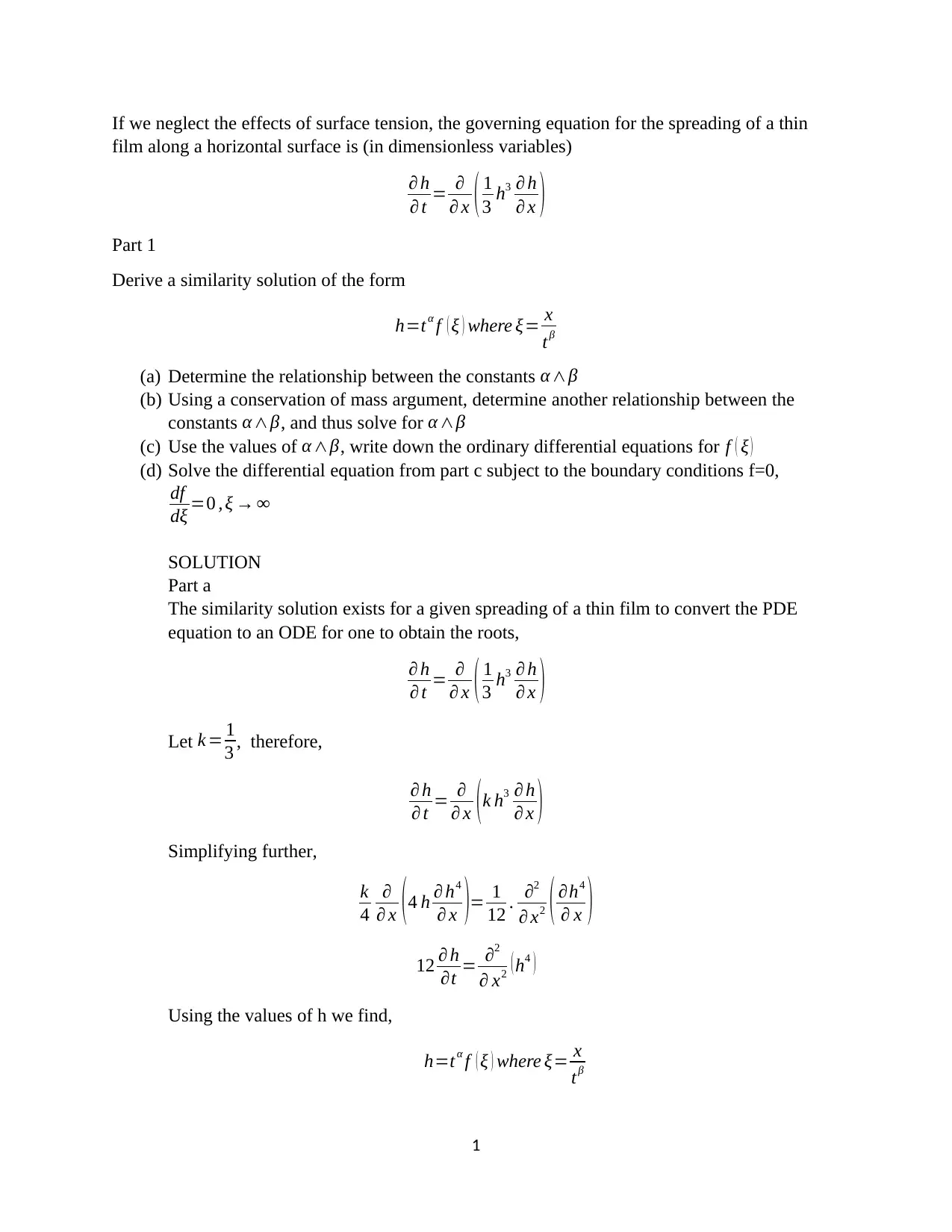
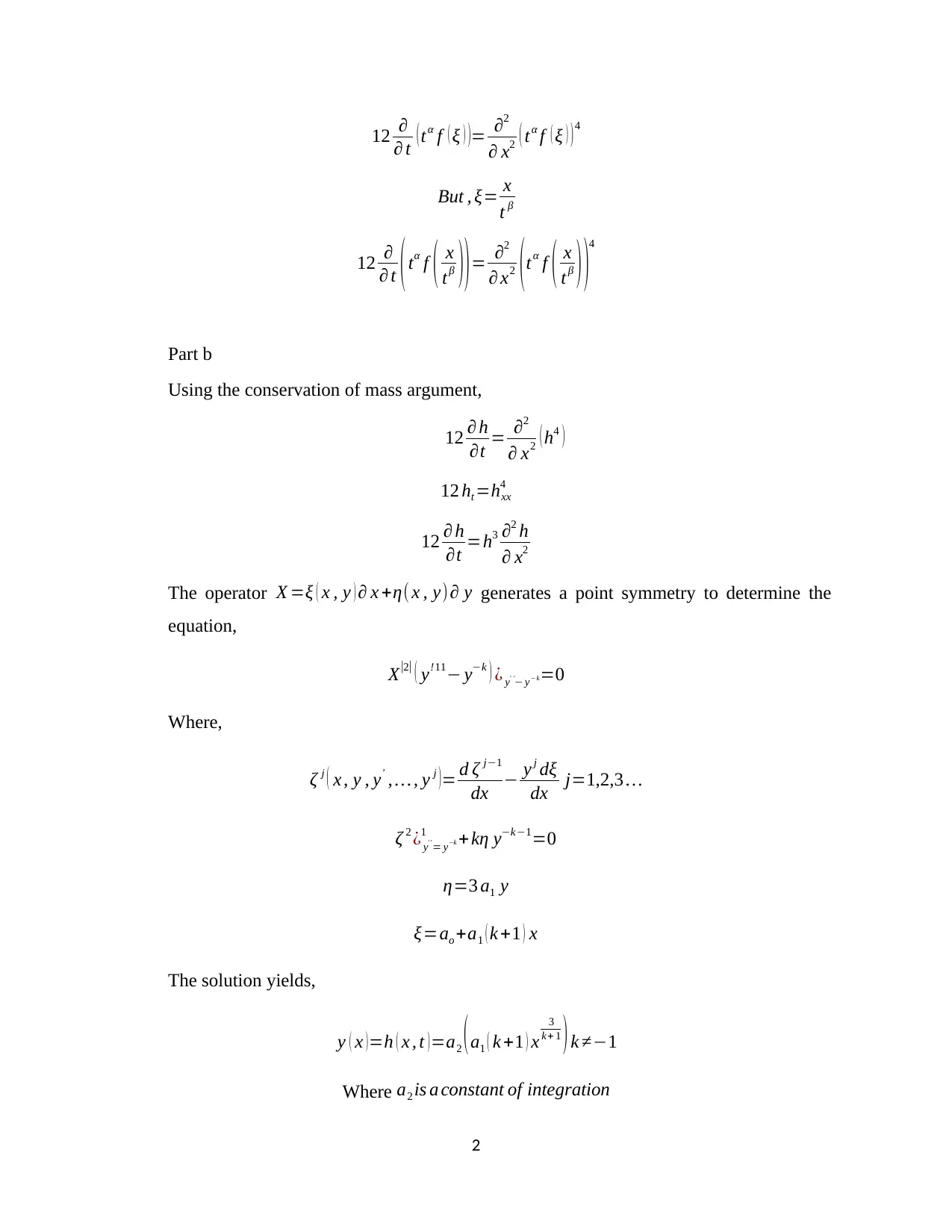

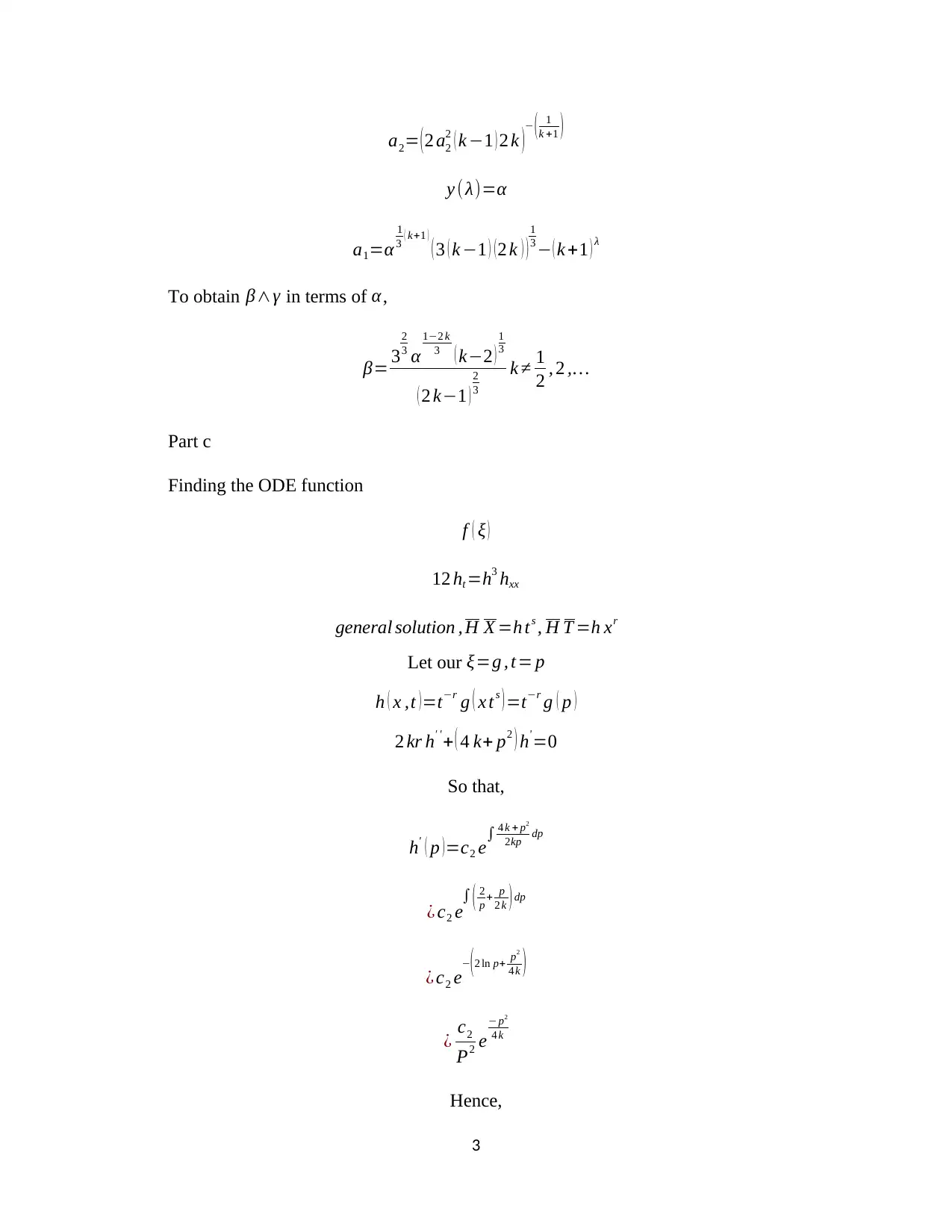
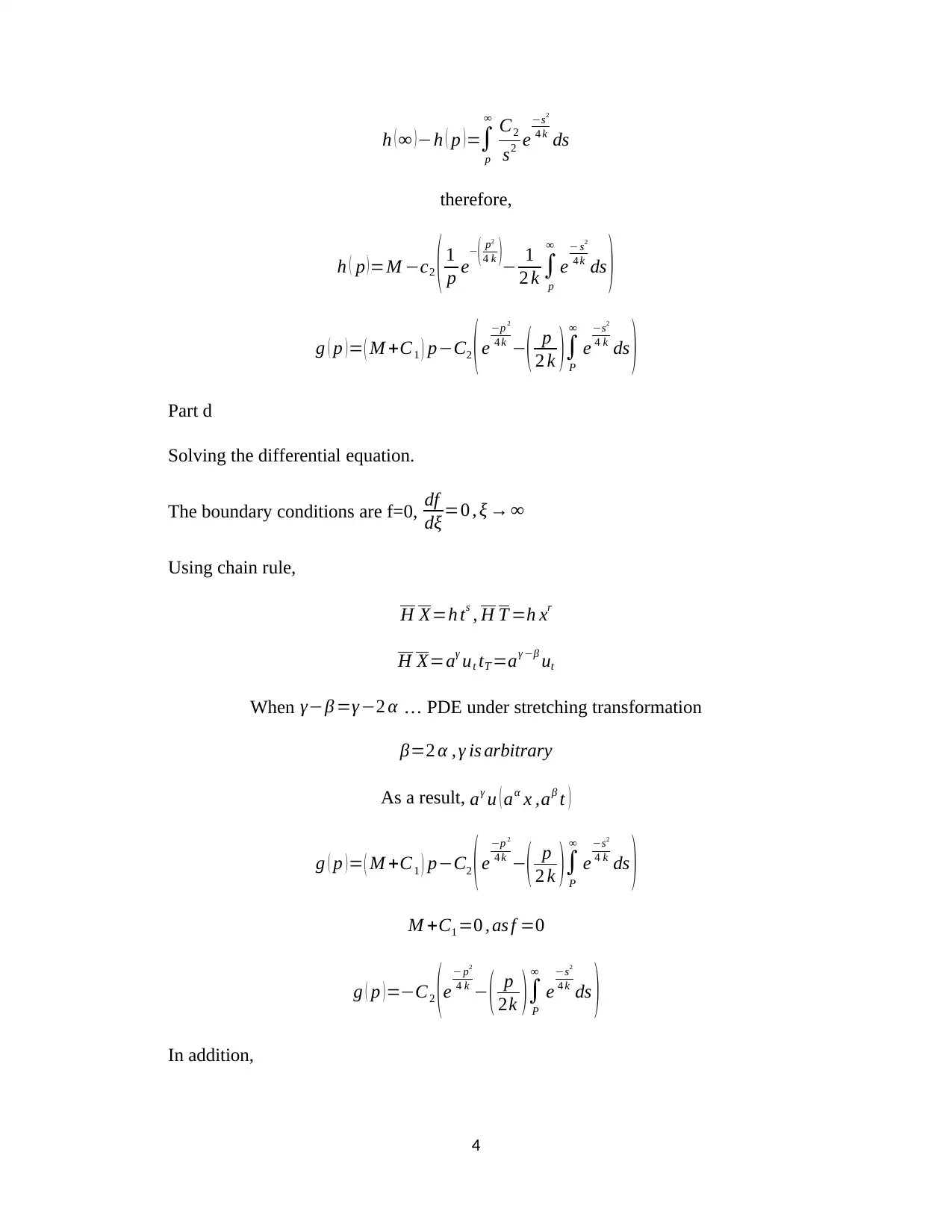
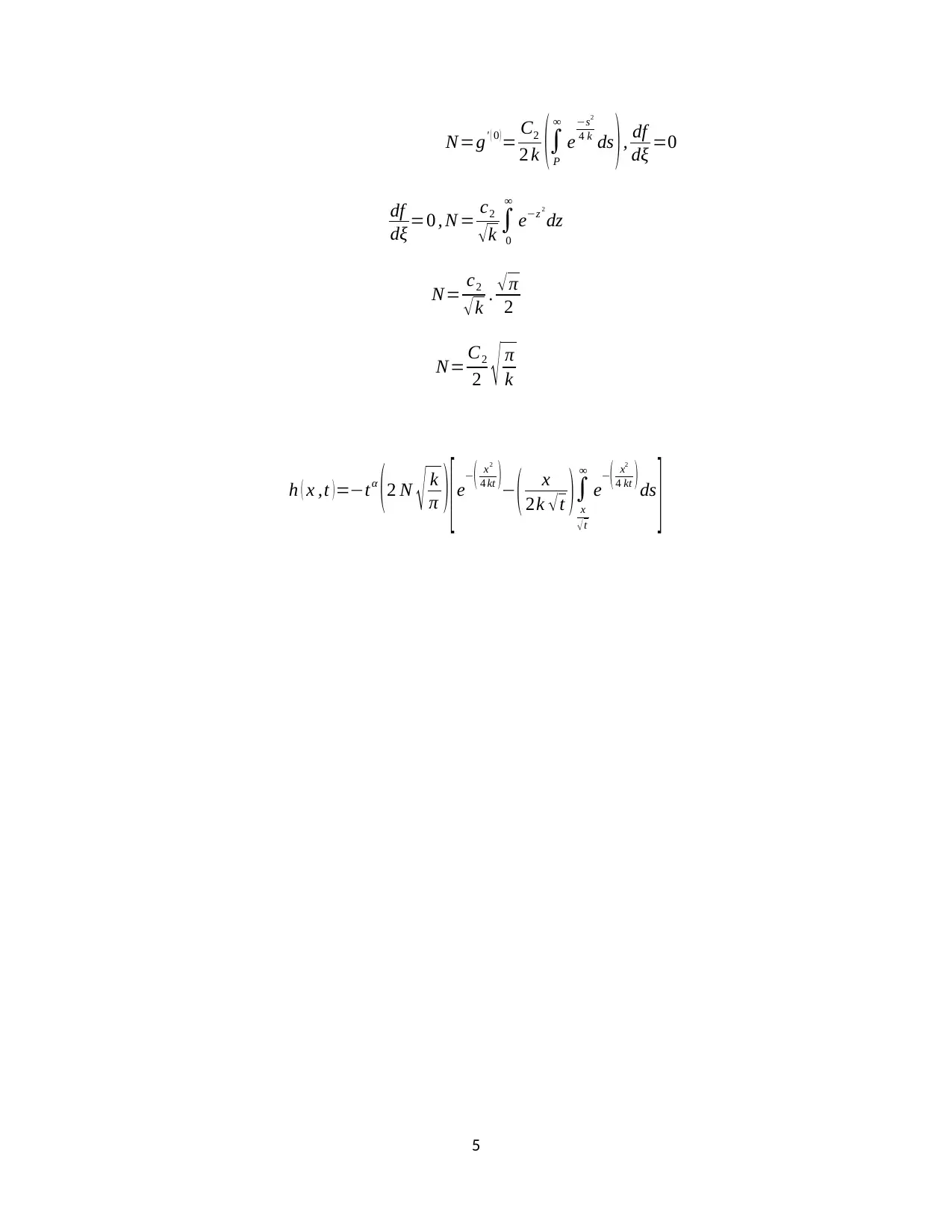





![[object Object]](/_next/static/media/star-bottom.7253800d.svg)